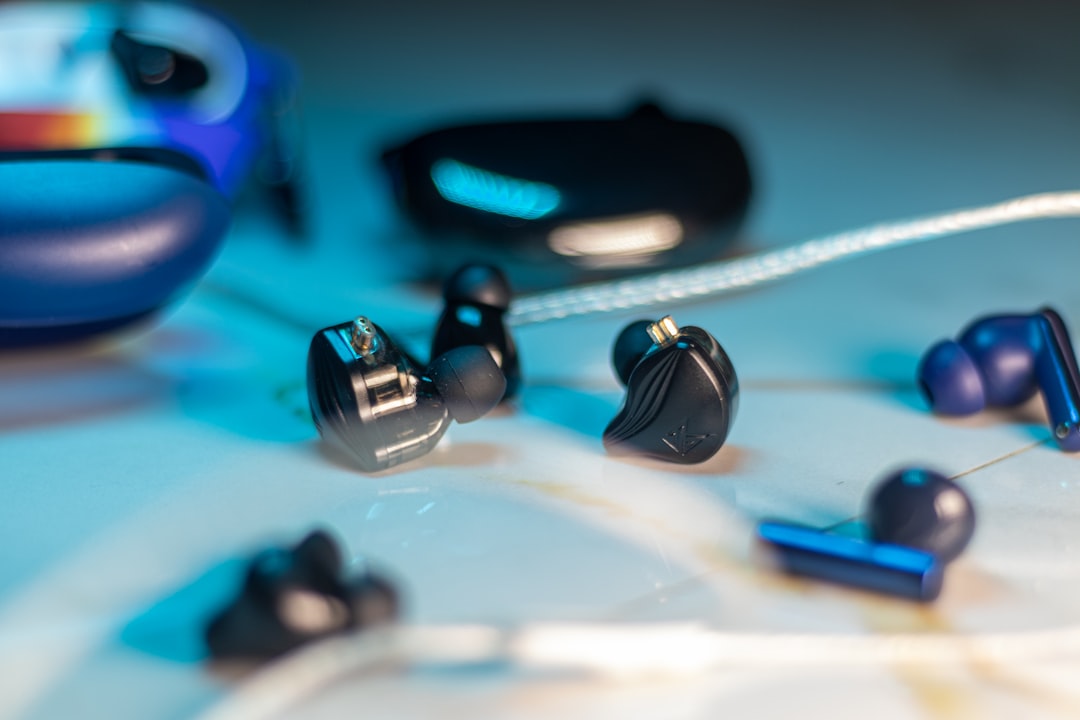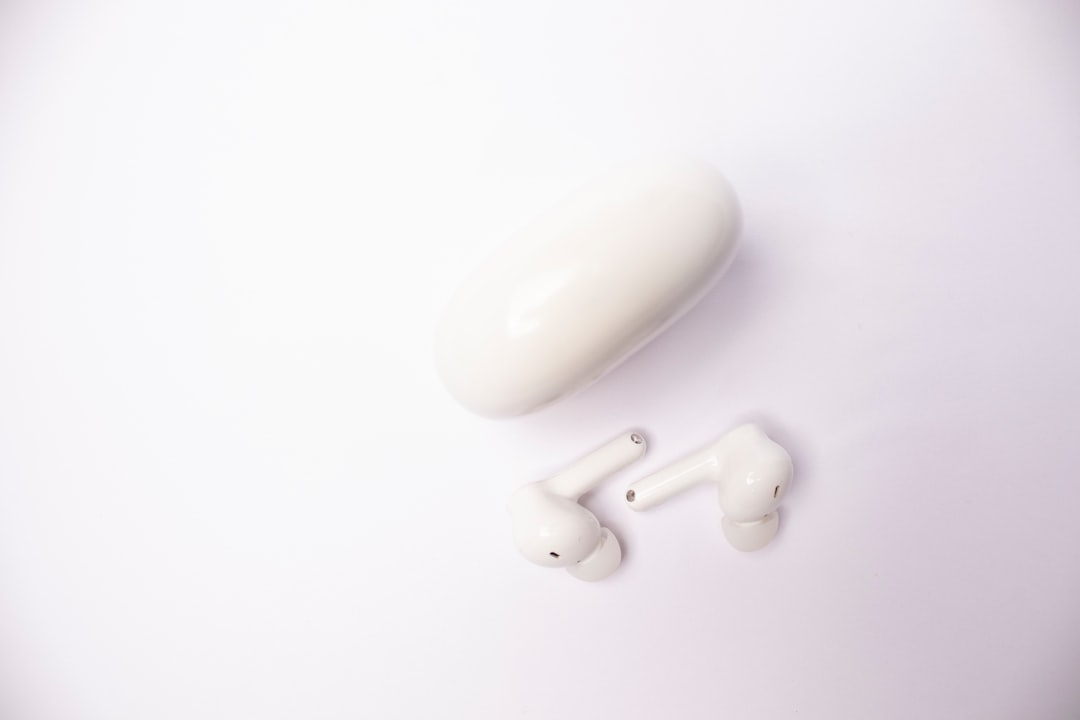

Engage prospects with a scan and streamline customer engagement with FREE QR code marketing tools by Sona – no strings attached!
Create a Free QR CodeFree consultation

No commitment

Engage prospects with a scan and streamline customer engagement with FREE QR code marketing tools by Sona – no strings attached!
Create a Free QR CodeFree consultation

No commitment
In today’s digitally driven world, QR codes have evolved from a novelty to a strategic powerhouse for bridging offline engagement with online action. For hearing aid repair services, QR codes unlock a fast, accessible path from a flyer, invoice, or counter display to a booking page, diagnostic checklist, or video guide. Clients do not need to download an app or enter long web addresses, and providers can finally connect walk-in interest to digital journeys that generate measurable outcomes.
This guide shows how to turn physical touchpoints into high-value digital interactions that reduce missed appointments, accelerate troubleshooting, and improve retention. You will learn which QR formats to use, where to place them, how to build retargeting audiences, and how to tie scans to revenue using modern analytics. Throughout, you will find practical, clinic-ready recommendations tailored to hearing aid repair teams, including front-desk staff, technicians, owners, and marketers.

Hearing aid repair operations often depend on manual processes that create friction: paper intake forms, phone-based scheduling, and printed instructions that go out of date. These analog steps slow the client journey and obscure intent signals that could drive more timely follow-ups. QR codes bridge the gap between in-person touchpoints and digital outcomes by redirecting clients to online scheduling, structured troubleshooting, and automated updates that are easy to maintain.
To get results, align each QR code with a clear business objective and measure its impact. Replace the poster that lists your phone number with a scan-to-book code. Swap paper repair forms for a mobile intake flow. Embed a code on invoices that links to parts ordering or post-service reviews. Intelligent placement and user-centered design increase scan rates and unlock the data you need to refine operations.
A data-driven approach helps hearing aid repair services move from labor-intensive workflows to real-time digital engagement. Platforms that support dynamic QR codes, CRM integrations, and granular analytics let you manage campaigns at scale and analyze engagement by location, device, and asset. Sona QR is built to support every step of this transformation, from creation and design to reporting and attribution.

Many hearing aid repair providers rely on appointment cards, brochures, and in-clinic signage that are informative but not actionable. Clients often intend to book service, request a tune-up, or watch a maintenance video, yet they postpone the task or lose the printed materials. QR codes remove the delay. One scan moves a person from consideration to action, right at the moment of interest.
QR codes also make your print assets measurable. Instead of guessing whether a window decal or flyer is working, you can see scan volume, time of day, device type, and down-funnel conversion. This visibility lets you invest in the placements and messages that actually drive bookings and revenue.
By turning every print surface into a digital gateway, QR codes close the loop between client intent and measurable action. They deliver operational efficiency for your team and a more convenient experience for your clients.

Different goals call for different QR code formats. In hearing aid repair services, certain formats consistently deliver strong results because they map cleanly to common tasks like contacting the clinic, booking an appointment, or watching a step-by-step guide.
Start by clarifying the action you want to trigger. If your goal is a scheduled repair, link directly to a pre-filled booking form. If you want quick feedback, link to a one-question survey. If you need to simplify contact management for caregivers and family, use vCards to save your clinic’s details in one scan.
Dynamic QR codes are ideal for most campaigns because destinations can be updated without reprinting. Use static codes when the link will never change, such as a permanent Wi-Fi login in a staff-only area. For client-facing materials and campaigns that evolve, dynamic codes provide flexibility and reliable tracking.
Growth often hides in plain sight. Hearing aid repair businesses handle a steady flow of printed touchpoints that rarely capture intent or measure engagement. Treat each one as a digital onramp and you can increase bookings, gather better data, and deliver more useful content.
Start with the surfaces your clients already see. Appointment cards, invoices, counter displays, packaging, and waiting room posters are all prime real estate for QR codes. Add clear, benefit-led calls to action that tell clients what they get after scanning and why it helps them.
Upgrade one touchpoint at a time to avoid overwhelming your staff. As you see which placements drive the most scans and conversions, invest in additional signage or targeted mailings that replicate the winning pattern.

QR codes can streamline the most frequent interactions in a repair workflow. Focus on the use cases that shorten time to value for clients and capture essential data for your team.
Start with high-impact tasks such as scheduling and troubleshooting, then layer in loyalty, reviews, and account management. Each use case should have a clear destination and a measurable outcome so you can assess impact and iterate.
Implementing these use cases can deliver measurable improvements in engagement and operations. You will know which products generate the most troubleshooting scans, which mailers convert to bookings, and which service experiences lead to positive reviews.
Every scan is a signal. It captures what the user cares about, where they were, and what they did next. With multiple QR codes across your touchpoints, you can auto-segment your audience by intent and context, then tailor follow-up via email, SMS, or ads.
Segmentation is particularly powerful in hearing aid repair services because clients have distinct needs. A caregiver scanning a troubleshooting video should receive different content than a long-time client scanning a loyalty program. Align your tags and follow-up paths to these realities.
With Sona QR, each code can carry metadata that automatically maps to fields in your CRM. That structure simplifies segmentation and ensures your team has the right context for outreach without manual tagging.
QR codes are the connective tissue across your offline and digital efforts. They transform brochures, window decals, and waiting room videos into interactive assets that drive measurable action. When managed through a central platform, they also unify your data across channels.
Plan your mix by mirroring how clients encounter your brand in daily life. Think about in-clinic signage for immediate tasks, direct mail for reactivation, and social content for education. Tie each placement to a destination that fits the context and a follow-up path that continues the conversation.
QR codes act as the offline onramp to your digital marketing engine. With a centralized platform like Sona QR, you can manage all codes, monitor performance, and sync scan data with your CRM and ad platforms to build a connected, measurable funnel.
Consistent results come from a repeatable process. A checklist helps your team avoid pitfalls such as vague calls to action, poor placement, and untracked scans. Use the following steps to design, deploy, and optimize QR campaigns that move the needle on bookings and retention.
Begin with a single high-impact use case, such as scan-to-schedule on appointment cards, so your staff can learn the flow. Once you validate scan rates and conversion, expand to additional placements like packaging, waiting room posters, and repair desk signage.
Clarify the business outcome you want to achieve. In hearing aid repair, common goals include increasing booked appointments, reducing basic support calls, and reactivating lapsed clients. Your use case determines the destination and the data you will collect.
Decide between static and dynamic codes. Static codes are fixed and untracked. Dynamic codes are editable, trackable, and recommended for most client-facing materials.
Design impacts whether people scan. Make the code large enough, use high contrast, and highlight the benefit with clear language. Incorporate your logo and brand colors, but do not sacrifice scannability.
Place codes where clients naturally look and where action is most likely. Match context to intent. A counter sign should invite booking or check-in, while a packaging label should offer care tips or reordering.
Review performance weekly at first. Look beyond scan counts to see which codes lead to bookings, reviews, or parts orders. Use those insights to refine placement, CTA copy, and destinations.
Modern tools such as Sona QR provide real-time reporting and CRM syncing so that unsubmitted forms and partial visits can still trigger follow-up messages. This closes the loop on interest that would otherwise go untracked.

Measuring what happens after a scan is essential. Without attribution, it is hard to know which assets drive bookings or which audiences are most engaged. Analytics convert raw scans into actionable insights that guide budget, staffing, and messaging.
Hearing aid repair teams benefit from both top-level trends and granular details. You might learn that troubleshooting posters perform best on Saturdays, or that direct mail drives larger average order values because those clients add parts or accessories. Use these insights to prioritize investments.
Sona QR captures real-world engagement and feeds it into Sona.com for deeper attribution and buyer journey mapping. The result is a clear line of sight from offline interest to booked repairs and revenue.
Once your first codes are live, scale intelligently. Prioritize placements that combine high visibility with clear next steps, and use automation to keep the journey going after the scan. Train staff to explain the benefit in a sentence so clients feel confident and supported.
Balance creativity with usability. A cleverly placed code on a hearing aid case can be delightful, but it still has to scan quickly and lead to a page that is easy to read on a phone. Always test with real clients, including older adults and caregivers, to ensure clarity and accessibility.
These tactics move QR codes from a novelty to a core operating system for engagement. They reduce reliance on manual follow-ups and build a measurable, repeatable path from interest to action.
QR codes have become a strategic lever for growth in hearing aid repair services. They turn familiar materials such as flyers, invoices, appointment cards, and packaging into gateways for action. Clients get faster paths to help. Teams get cleaner data and clearer attribution. The result is a connected experience that moves people from awareness to booking and follow-up with fewer dropped threads.
Here is what this approach delivers when done well: instant engagement across print and in-clinic media, streamlined workflows that reduce manual bottlenecks, and actionable data that turns each scan into a signal you can use. A centralized platform like Sona QR helps you generate, manage, and track codes at scale, and with Sona.com you can tie those interactions to pipeline and revenue with confidence. Start creating QR codes for free.
The opportunity is straightforward. Start with one or two high-impact touchpoints, measure the results, then expand to additional placements and use cases. Each incremental scan improves your visibility, strengthens customer relationships, and compounds the value of your existing materials. As traditional manual workflows give way to automated, data-informed journeys, every scan becomes a chance to reveal hidden engagement, reduce missed leads, and deliver more personalized service.
QR codes have transformed hearing aid repair services from traditional, time-consuming processes into seamless, customer-centric experiences. By enabling instant access to repair guides, appointment bookings, and personalized support, QR codes not only enhance customer satisfaction but also streamline operations and boost service efficiency. Imagine your clients effortlessly scanning a code to schedule repairs or access troubleshooting tips, reducing wait times and increasing loyalty.
With Sona QR, you can create dynamic, trackable QR codes in seconds, update repair-related content instantly without reprinting, and link every scan to actionable insights that help you identify client needs and optimize service delivery. No missed connections, no guesswork—just smarter, more responsive hearing aid repair services.
Start for free with Sona QR today and turn every scan into a faster repair, a happier customer, and a stronger business.
QR codes provide a fast, accessible way to connect clients from physical touchpoints like flyers or invoices to online booking, troubleshooting, and parts ordering, reducing manual processes and improving engagement.
High-impact placements include appointment cards, invoices, counter displays, waiting room posters, packaging, direct mailers, and repair desk signage.
Dynamic QR codes are recommended for client-facing materials because they are editable and trackable, while static codes are suitable for permanent resources like staff Wi-Fi access.
They enable immediate action from clients by linking to booking pages, troubleshooting guides, and feedback forms, while tracking scans helps tailor follow-ups and improve service.
Track unique scans, scan-to-conversion rates, repeat scans, booking conversions, and time to conversion by asset and location to optimize campaigns.
QR codes on posters and packaging can link to device-specific videos and guides that help users perform minor fixes, reducing support calls and improving technician triage.
Yes, QR codes printed on appointment cards or invoices can direct clients to mobile booking pages with pre-filled details, increasing bookings and reducing no-shows.
Staff should mention the benefits of scanning with a simple script, such as explaining that scanning provides quick access to booking or troubleshooting resources.
Scan data from QR codes can sync with CRM platforms to trigger reminders, educational content, and targeted offers, enabling personalized follow-up and better customer management.
Dynamic QR codes allow updating the destination URL without reprinting, support tracking and analytics, and facilitate A/B testing for continuous campaign improvement.
Use Sona QR's trackable codes to improve customer acquisition and engagement today.
Create Your FREE Trackable QR Code in SecondsJoin results-focused teams combining Sona Platform automation with advanced Google Ads strategies to scale lead generation

Connect your existing CRM

Free Account Enrichment

No setup fees
No commitment required

Free consultation

Get a custom Google Ads roadmap for your business






Launch campaigns that generate qualified leads in 30 days or less.
